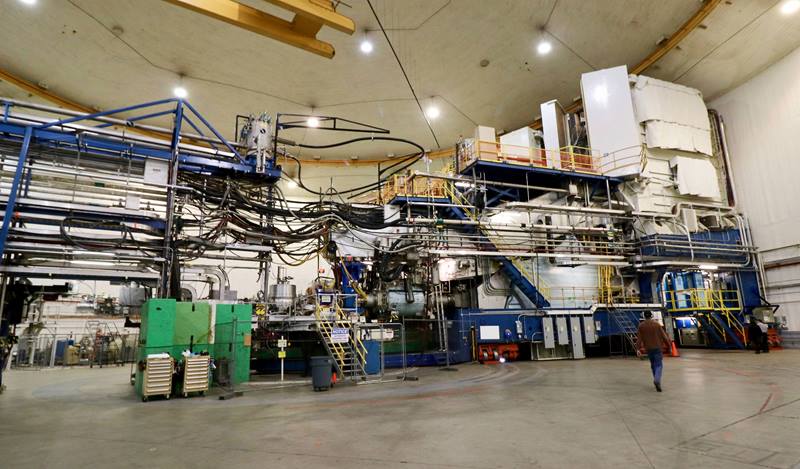
The Science
Using a new and first-of-its-kind precision measurement of the nucleus of the rare calcium-48 isotope, nuclear physicists have determined how its 20 protons and 28 neutrons are distributed inside its nucleus. The experiment found that calcium’s protons and neutrons aren’t simply sprinkled throughout the nucleus. Instead, they form a neutron-rich “thin skin” around a core of more-evenly distributed protons and neutrons. The researchers found that the calcium-48 neutron-rich skin is just 0.121 femtometers thick. A femtometer is just one billionth of a meter. This is thinner than many models predicted and is somewhat surprising in comparison with the thick neutron skin seen in lead. This is because existing theoretical models predicted that calcium-48 should have a thicker skin than it does, while these same models predicted a thinner neutron skin for lead than was measured.
The Impact
This new measurement is exciting for nuclear physics. It warrants further exploration of the thin skins of other heavy nuclei to determine why there’s a large discrepancy between nuclei of calcium, which has a medium mass, and more massive lead nuclei. Combining the data from these experiments will provide scientists with important constraints on future models of nuclear structure. The results also have implications for the neutron matter equation of state, which describes the structures of neutron stars and the dynamics of neutron-star mergers.
Summary
To better understand nuclear structure, nuclear physicists conduct experiments to tease out how protons and neutrons are distributed inside atomic nuclei. Dense, neutron-rich nuclei provide unique insights into nuclear structure. As nuclei get heavier, they require more neutrons than protons to remain stable. For instance, lead-208 has 82 protons and 126 neutrons, while the rare calcium-48 nucleus has 20 protons and 28 neutrons.
The first of these measurements confirmed that lead nuclei have a thick, neutron-rich skin surrounding a more-evenly distributed core. This most direct observation of lead’s neutron skin measured its thickness as 0.28 femtometers, or 0.28 millionths of a nanometer. In the lighter calcium-48 nucleus, the neutron skin was measured to be just 0.121 femtometers thick. This surprising result is thinner than predicted and presents a challenge to theoretical models to solve this discrepancy. These measurements were made possible by the unique capabilities of the Continuous Electron Beam Accelerator Facility, a Department of Energy (DOE) user facility at the Jefferson Lab that offers an extraordinarily stable electron beam for experiments. In addition, the ingenious experimental technique developed to carry out these measurements is helping scientists reveal new details in the structures of atomic nuclei.
Contact
Kent Paschke
University of Virginia
[email protected]
Funding
This work was supported by the DOE Office of Science, Nuclear Physics; the National Science Foundation; and the Natural Sciences and Engineering Research Council of Canada.
Publications
Adhikari, D., et al. (CREX Collaboration), Precision Determination of the Neutral Weak Form Factor of 48Ca. Physical Review Letters 129, 042501 (2022). [DOI: 10.1103/PhysRevLett.129.042501]
Related Links
Scientists Measure Calcium’s Thin Skin, Jefferson Lab news release
Physicists Net Neutron Star Gold from Measurement of Lead, Jefferson Lab news release
Physics Viewpoint: Probing the Skin of a Lead Nucleus
It’s Elemental: The Periodic Table of Elements, Jefferson Lab Science Education resource
Scraped from https://www.sourcearu.com




